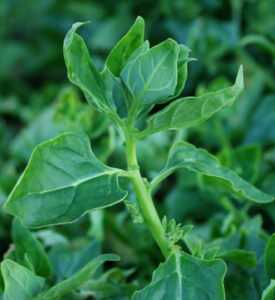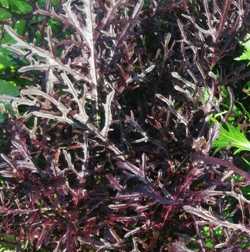 This week we take pleasure in introducing you to a new, unique product available for purchase from Chubeza and delivery in your boxes – Lechem Pele (Wonder Bread) – naturally leavened bread made from grains and legumes, gluten free. This week’s boxes will contain an information sheet describing the product. Its creator, Shirley Rochel of Moshav Hogla, worked many years as an administrator and consultant in major organizations before deciding to make a career change. Here’s her story:
This week we take pleasure in introducing you to a new, unique product available for purchase from Chubeza and delivery in your boxes – Lechem Pele (Wonder Bread) – naturally leavened bread made from grains and legumes, gluten free. This week’s boxes will contain an information sheet describing the product. Its creator, Shirley Rochel of Moshav Hogla, worked many years as an administrator and consultant in major organizations before deciding to make a career change. Here’s her story:
A wise lady helped me reach an insight: it is my turn to do good to those around me. And so I decided to develop a type of bread that is protein, tasty, filling and guilt-free. The need was very clear to me: to develop and market a new, long-needed food product at a fair price which is also nutritious and tasty. However, the means to reach this goal were not simple and involved endless reading and learning about nutritional values and benefits, while researching the anthropology and nutrition habits of various nations worldwide. Plus, of course, long months of trial and error. And now at last I can happily introduce you to Lechem Pele. We’re starting small, hoping to grow gradually, aiming to be a business with social and ecological conscience, one which is fair and will make you feel good (as food is such a significant factor in maintaining a vital body and balanced soul).
Shirley’s super-delicious and filling “wonder breads” contain vegetal protein and a sourdough culture for leavening, and are handmade with no yeast, sugar or oil. Why then are they “wonder breads”? Well, because they contain only whole grains without gluten, sprouted legumes and flax, ground and kneaded by millstone and fermented in traditional ways. This amounts to nutritious bread, high in full vegetal protein, containing low glycemic-level dietary fibers.
The grains used in our loaves – rice, quinoa, teff, millet, Amaranth and sorghum – contain no gluten. These grains, along with the ground flax, buckwheat and legumes, are soaked and sprouted in water for hours at a time in order to take maximum advantage of the nutritional values they contain. Lechem Pele – Wonder Bread is a food closest to the natural state of the vegetal raw material, thus allowing for extra high nutritional value.
Our breads follow the Indian, African and South American traditional techniques of baking and production, while at the same time are quite suitable for our modern Western eating habits.
The breads are rich in high water content, creating a crispy crust and dense loaf. The long rising process allows for a stronger expression of the bread’s flavor.
Lechem Pele is vegan, made in an allergen-proof environment approved by the World Health Organization. The loaves are sent fresh from the freezers, and should be stored in a refrigerator or freezer. Perfect for sandwiches and toast.
Lechem Pele Wonder Breads can be added to your boxes beginning next Monday via our order system. Don’t miss them!
_______________________
The Greenhorns!
We anxiously await the rain. Over the past few weeks we’ve enjoyed scattered showers, a proper appetizer for the real thing, and now it’s high time for the main course! The skies are beautifully adorned with clouds, and the winds push them vigorously to and fro, scattering dry leaves and lovingly teasing the greens in our field. But alas, the rain is not yet a regular. Thus it’s time for our little Chubeza Rain Dance to beseech the skies to shower us with their treasures!
The last of our summer crops are celebrating their final weeks in the field. We shall soon bid farewell to our black-eyed peas (lubiaI), okra, eggplants and pumpkin. The corn, too, will be striking its final chords this week and next. These vegetables now pass on the torch to the winter crops, as the beets, carrots, radishes and turnips, kohlrabi and fennel are already skipping happily to the packing houses, with the celery and cabbage not far behind. The cauliflower and broccoli, meanwhile, are growing great big leaves and beginning to prepare themselves for the cherished buds.
I always know its wintertime when my green-o-meter shows a dozen emails with the subject, “What ARE the green leaves in my box this week!?” Indeed, winter generates a broad variety of greens dotting the Chubeza clods, filling up your boxes. Some of you are delighted with the plethora of greens over the winter, and even request we avoid removing the beet and turnip leaves so as to make use of them as well. Yet others of you are a bit overwhelmed, and wonder what can be done (again) with all those greens.
For those who are still wondering, I am proud to present:
“Chubeza Winter Greens – A Guide to the Perplexed”:
Swiss Chard

A sibling of the beet, differing by growing huge leaves instead of a thick root. Perfect in soup, quiches, and stuffing, as well as steamed or tossed, and even used fresh in a salad.
Here is a wide variety
of recipes.
Tatsoi (Spinach mustard, Spoon mustard, or Rosette bok choy)

A traveler from the Far East, member of the choy or soy family, belonging to the Brassicaceae dynasty. Its flavor is just slightly bitter, not spicy, but very distinctive. Goes perfectly well with piquant flavors (mustard and black pepper), ginger, sesame and sweet fruit varieties.
Like mustard greens or Swiss chard, tatsoi can be used fresh in salads, tossed or cooked, in soup, quiche, omelets, etc.
Here are some thoughts about tatsoi, and a recipe. Scroll down and you’ll find some links to other recipes.
New Zealand Spinach

As indicated by its name, its origins are in New Zealand and Australia. Discovered by Captain Cook on the beaches of New Zealand, this green was harvested, cooked and even taken on voyages to fight Vitamin C deficiency-caused diseases. New Zealand spinach is ideal for our local climate because it loves warm weather. It sprawls and spreads, and its leaves are small and meaty.
New Zealand spinach can go with any recipe calling for mustard greens, but is definitely suitable as a Swiss chard replacement. To prepare for cooking, one must remove the leaves from the stem which is hard and inedible. Unlike regular mustard greens or Swiss chard, it is not recommended to eat New Zealand spinach raw, but rather first soaked in hot water for a few minutes, then washed with cold water.
Recipes for New Zealand Spinach
Winter Spinach

Depending on the season, the bed in which it’s grown, and the timing of its harvest, spinach can sport huge leaves or resemble “baby” spinach.
It definitely tastes green (I used to be surprised when people described a flavor as “green”), just slightly bitter and then just a little sweet, chockful of rain and freshness flavors.
Like its cousin Swiss chard, spinach can go fresh in a salad or can be cooked, added to soup, a quiche, dumplings, an omelet or warm salads. They all work.
Arugula

This yummy green goes by many names: arugula, rucola, roquette and rocket lettuce. Its flavor is piquant, typical of the Brassicaceae family. Like spinach, arugula can come in many forms, from huge and meaty to small and dainty.
The arugula leaves are spicy, but they have their own distinctive type of piquant flavor which can give a dash to a salad, even together with sweet fruit. Cheeses go quite well with arugula, and a very light cooking can temper the spiciness.
You can find many recipes if you conduct an internet search for “arugula” or “rocket lettuce.”
Kale

A green belonging to the Brassicaceae family, considered to be one of the healthiest foods around. An acquired taste, but definitely worth getting used to and falling for.
Due to its relatively rigid texture, kale is usually cooked or added to a green shake, but you can make chips from it or eat fresh in a salad—-it’s great!
Songs of praise and kale recipes to be found here
Mizuna


A green member of the Brassicaceae family, otherwise known as Japanese spinach or Brassica rapa. Mizuna sports long, thin leaves with serrated edges and a gentle, sweet-like flavor. The plant was cultivated in Japan back in ancient times, but probably originated in China.
Mizuna’s flavor is neutral, making it a perfect decorative addition and basis for appetizers and main dishes, as well as a great salad herb. It tends to star in the “baby” mesculun mixes (ours as well), but also stands on its own and is even great stir-fried.
Mizuna and daikon salad (thank you to Julie from Tel Aviv)
Mizuna salads recepies from Mariquita Farm
Vegetable greens like being connected to their roots and the earth. When you want to store them after harvesting, you should attempt to prevent two unwanted side effects: drying up and rotting. There are a several methods for long-term storage. First, to prevent rotting, avoid wetting the greens and only wash them prior to use. To keep them moist, large leaves like lettuce, Swiss chard, kale, tatsoi, spinach and mustard greens should be wrapped (unwashed) in cloth or paper and placed in a plastic bag in order for the moisture to be absorbed without actually drying up.
But for all this green abundance to actually grow, we desperately need winter showers! Now, after the 7th of Cheshvan has passed and the pilgrims of old have long returned, you’re all encouraged to pray, hope, beg, insist or practice the steps to your rain dance till that rain comes to grace us with its presence.
That’s all for now! I hope the green picture is a bit clearer for you all. But never fear. Should an unrecognizable guest arrive in your boxes, we are just a phone call away for clarification. You are always welcome to pose questions by phone (054-653-5980, although often it’s hard to get ahold of us) or by email ([email protected]). Our loyal Facebook page of Chubeza members is always helpful as well for information or suggestions.
May we all enjoy a week of good fortune, health and growth!
Alon, Bat Ami, Dror, Yochai and the entire Chubeza team
________________________________________________________
WHAT’S IN THIS WEEK’S GREEN BOXES?
Monday: Coriander/dill, corn, lettuce, cucumbers, tomatoes, New Zealand spinach/Winter spinach, baby radishes/daikon/radishes, Jerusalem artichoke/yard-long beans/okra, sweet potatoes, bell peppers/eggplant. Small boxes only: arugula/tatsoi
Large box, in addition: Beets/turnips, onions, Swiss chard/kale, kohlrabi/fennel.
Wednesday: Coriander/dill, corn/carrots, lettuce, cucumbers, tomatoes, New Zealand spinach/Winter spinach, baby radishes/daikon/radishes, Jerusalem artichoke/beets, sweet potatoes, bell peppers/eggplant, Swiss chard/kale.
Large box, in addition: Leeks/onions, kohlrabi/fennel, arugula/tatsoi/mizuna.
And there’s more! You can add to your basket a wide, delectable range of additional products from fine small producers: flour, sprouts, honey, dates, almonds, garbanzo beans, crackers, probiotic foods, dried fruits and leathers, olive oil, bakery products, granola, natural juices, cider and jams, apple vinegar, dates silan and healthy snacks, ground coffee, tachini, honey candy and goat dairy too! You can learn more about each producer on the Chubeza website. On our order system there’s a detailed listing of the products and their cost, you can make an order online now!
